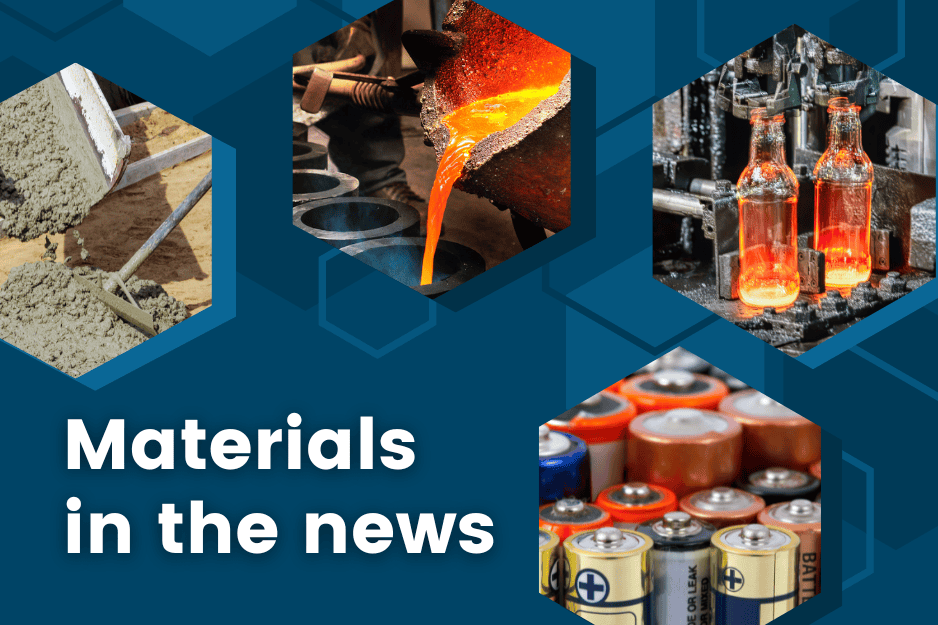
[Image above] Credit: ACerS
ENERGY
Nanopatterned copper oxide sensor for ultralow hydrogen detection
Institute of Science Tokyo researchers developed a sensor made from nanopatterned copper oxide nanowires with voids that can detect hydrogen at extremely low concentrations with high response, recovery speed, and precision. It has the potential to enable safer and more reliable use of hydrogen in clean energy applications.
Quantum-inspired design boosts efficiency of heat-to-electricity conversion
Rice University researchers developed a new thermal emitter composed of a tungsten metal sheet, a thin layer of a spacer material, and a network of silicon nanocylinders. It can convert heat to electricity with more than 60% efficiency.
Perovskite–silicon tandem solar cell achieves 30.04% efficiency
Researchers in China fabricated a perovskite–silicon tandem solar cell that uses an indium oxide sputtering buffer layer to protect the perovskite absorber and the electron transport layer from potential damages during the electrode deposition process. The cell achieved an efficiency of 30.04% and retained about 80% of its efficiency after 423 hours of continuous light.
ENVIRONMENT
Transforming marine waste and carbonated water into hydrogels via CO₂ release behavior
Researchers at Tokyo University of Science investigated how carbonated water facilitates the gelation of alginate and CaCO3 solutions. The rapid release of CO2 from the hydrogels after gelation resulted in a faster pH increase, lower amount of CaCO3 dissolution, and lower crosslinking degree.
Sometimes you’re the windshield: Researchers say vehicles cause significant bee deaths
Based on a study that used sticky traps attached to car bumpers, Utah State University researchers determined that tens of millions of bees may perish every day as motorists zoom down busy highways of the western United States.
MANUFACTURING
Cement grows stronger, more resilient with cellulose innovation
Purdue University researchers increased the strength and resilience of cement by integrating patent-pending chemically modified cellulose nanocrystals and nanofibers. Mechanical tests show a 30% increase in concrete’s flexural strength when 0.2% volume of the nanocellulose is integrated.
Student rocket soars faster and farther into space than any other amateur spacecraft
Aftershock II, a rocket built by students at the University of Southern California, recently broke a number of 20-year-old amateur spaceflight records for altitude, power, and speed.
OTHER STORIES
Exploring optical cooling in semiconductor quantum dots
Chiba University researchers experimentally demonstrate how perovskite quantum dots contained in a crystal lattice can reach temperatures of about 10 K below room temperature via optical cooling, paving the way for energy-efficient cooling technologies.
Color-changing semiconductor materials
Nanyang Technological University researchers created new semiconductor materials that change color when heated and cooled. The color-changing reaction could be repeated for 25 cycles.
Cooperative motion by atoms protects glass from fracturing
Tohoku University researchers uncovered a previously unknown mechanism of stress relaxation in ionic glass. When atoms within a glass “jump” into nearby empty spaces, surrounding groups of atoms move together to fill the void. This interplay of atomic jumps and collective motion reduces internal stress, protecting the glass from breaking under external force.
Archaeologists uncover Roman-era clay theater ticket in ancient city of Prusias ad Hypium
Excavations at the ancient city of Prusias Ad Hypium in the Konuralp region of Düzce in northwestern Türkiye uncovered a Roman-era clay theater ticket, a figurine depicting Aphrodite, and a Thyrsus figure.
A firm randomly assigned its scientists AI: here’s what happened
A machine-learning tool was deployed at an unnamed corporate laboratory employing more than 1,000 researchers. Teams that were randomly assigned to use the tool discovered 44% more new materials and filed 39% more patent applications than did the ones that stuck to their standard workflow.
Author
Lisa McDonald
CTT Categories
- Weekly Column: “Other materials”